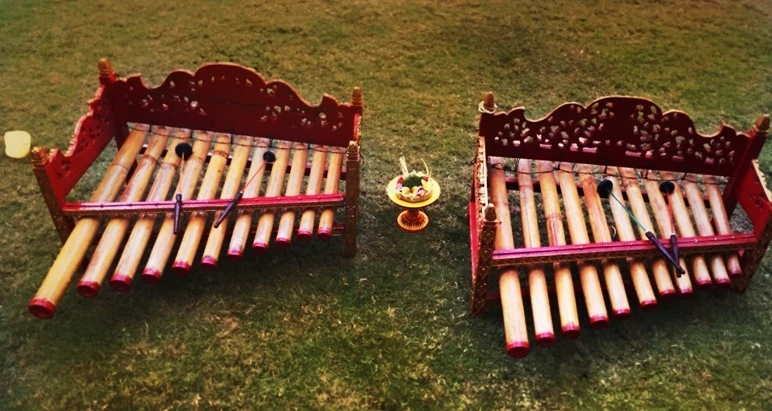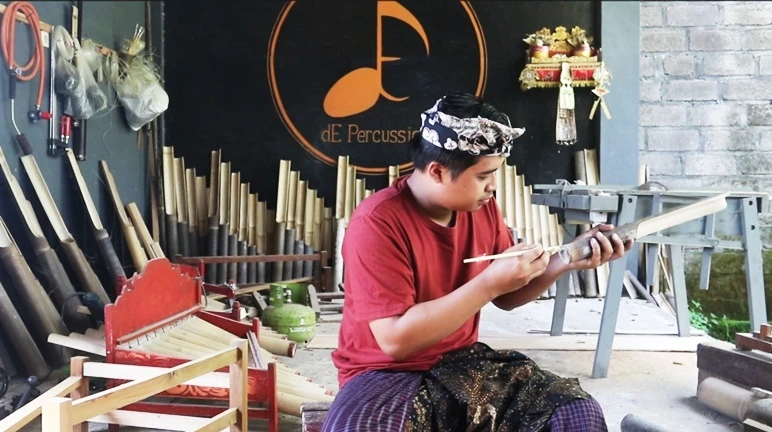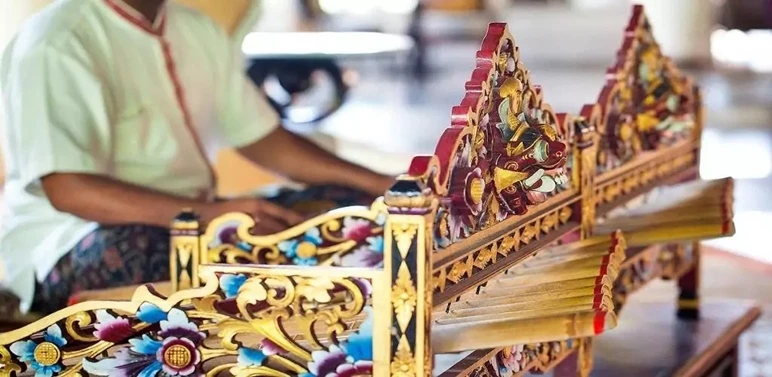An age-old sound born from migration, survival, and devotion, the story of Rindik reveals how a simple bamboo instrument became one of Bali’s most enduring cultural treasures. Discover how this traditional music continues to shape the island’s rhythm and spirit today!
As a bridge between past and present, Rindik tells a story of resilience, adaptation, and the enduring power of art to connect worlds.
The Origins of a Musical Migration
The history of Rindik begins far from the beaches of Bali, in the heart of Java during the Majapahit era. When the powerful Majapahit kingdom faced rebellion from the people of Wengker (modern-day Ponorogo), the rebels carried with them a unique instrument known as Angklung Reyog. This musical tool, once used as a weapon of resistance, later transformed into a symbol of cultural identity.

As the Demak kingdom launched its attack on Majapahit, many of these musicians and craftsmen fled eastward, seeking refuge in Bali. They brought along their instruments and traditions, but upon arriving on the island, they encountered a new challenge. The large, intricate gamelans and angklungs they once played were difficult to move, repair, or reproduce. Faced with this limitation, the exiles began experimenting with local materials. Bamboo, abundant across Bali’s lush landscapes, became the foundation for an entirely new instrument—the Rindik.
Crafting Harmony from Bamboo
A traditional Rindik typically consists of 11 to 13 bamboo blades, each precisely cut, tuned, and arranged on a wooden frame called a pelawah. The crafting process demands patience and precision. Every piece of bamboo is selected for its thickness and resonance, then placed in ascending order of pitch—from the largest and lowest on the left to the smallest and highest on the right.

When struck with mallets made of rubber-tipped wood, the Rindik produces the slendro scale, a five-tone tuning system characteristic of many Balinese gamelan ensembles. The instrument’s tone is gentle yet vibrant, creating melodies that evoke calmness and connection to nature. Historically, Rindik music accompanied farmers working in rice fields, offering a tranquil soundtrack to daily life. Today, it remains an integral part of Balinese ceremonies, weddings, and traditional dance performances like Joged Bumbung.
Structure, Scale, and Symbolism
Beyond its craftsmanship, Rindik embodies a profound philosophical depth rooted in Balinese cultural values. Each performance follows the principle of Tri Angga, which divides a composition into three essential stages. It opens with the pengawit, or head, setting the tone and atmosphere for the piece. The pengawak, or body, then unfolds the main melody and rhythm in full bloom, leading into the pangecet, or feet, where the tempo rises and intensity peaks before the music resolves in calm completion.

This tripartite form reflects Balinese cosmology, symbolizing balance and wholeness in all forms of creation. Within this structure, the dialogue between melody (polos) and counter-melody (sangsih) defines Rindik’s distinctive sound—an intricate blend of harmony, rhythm, and emotional resonance that captures the island’s spiritual essence.
From Sacred Sound to Cultural Icon
Over centuries, Rindik evolved from an instrument of rural entertainment to a symbol of Balinese identity. Its music, once echoing through rice paddies, now graces temple festivals, cultural performances, and even wellness retreats, where its soothing tones are used in meditation and reflexology therapy.

While digital sounds dominate the modern world, Rindik continues to thrive, its resonance reminding listeners of the harmony between humanity and nature. For many Balinese, playing or listening to Rindik is not merely a musical act but a spiritual practice—a way to honor ancestral creativity and divine inspiration.




 Billy Bagus
Billy Bagus
 Oct 21, 2025
Oct 21, 2025






